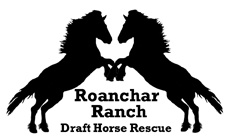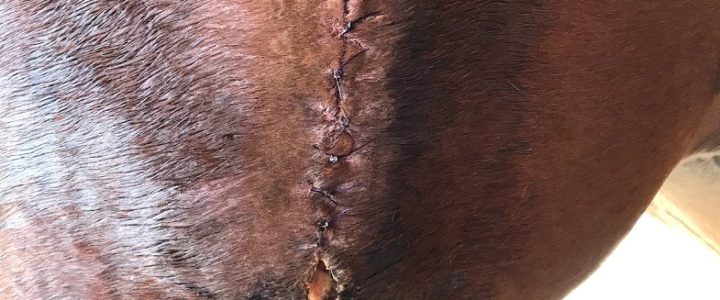You think that you have your barn and pasture horse proofed to minimize injuries from happening. Then it happens. Your horse is injured. What do you do?
RECOGNIZING SIGNS OF DISTRESS
It is easy to know your horse is hurt when you see a cut, but there are other ailments that are not as obvious, but are just as critical, such as colic or illness. That is why it is important to know your horse’s normal temperature, pulse, and respiratory rate, as well as normal behavior patterns.
WHAT’S NORMAL
Normal ranges for adult horses are:
- Pulse rate: 30 to 42 beats per minute.
- Respiratory rate: 12 to 20 breaths per minute.
- Rectal temperature: 99.5′ to 101.5′ F. If the horse’s temperature exceeds 102.5′ F., contact your veterinarian immediately. Temperatures of over 103′ F indicate a serious disorder.
- Capillary refill time (time it takes for color to return to gum tissue adjacent to teeth after pressing and releasing with your thumb): 2 seconds.
Each horse has an individual temperature, pulse and respiration rate. You should take several baseline measurements when your horse is healthy, rested, and relaxed. Write them down and keep them within easy reach so you have them to compare to in case of an emergency. Your first aid kit is a good place to keep them.
FIRST AID KIT
It is a good idea to have a first aid kit in your barn and trailer, in addition to a smaller version when you go out on a trail ride. Amazon sells kits, but here is a shortlist to get you started:
- *Cotton roll
- *Contact bandage
- *Cling wrap
- *Gauze pads, assorted sizes
- *Gauze wrap
- Adhesive wrap and adhesive tape
- Leg wraps
- Sharp scissors
- Hemostats
- Steel cup or container
- Rectal thermometer with string and clip attached
- Surgical scrub and antiseptic solution
- Latex gloves
- Flashlight and spare batteries
- Permanent marker pen
* Material that should be sterile.
GENERAL GUIDELINES
Any number of emergencies that can happen. In most situations, it is good to follow these guidelines:
- Keep the horse as calm as possible. Your own calm behavior will help achieve this.
- Move the animal to a safe area where it is unlikely to be injured should it go down.
- Get someone to help you, and delegate responsibilities, such as calling the veterinarian, retrieving the first aid kit, holding the horse, etc.
- Notify your veterinarian immediately. Be prepared to provide specific information about the horse’s condition, such as pulse, respiration, and temperature.
- Listen closely and follow your veterinarian’s instructions.
- Do not administer drugs, especially tranquilizers or sedatives, unless specifically instructed to do so by your veterinarian.
SUMMARY
Emergencies are stressful for you and your horse. Being prepared will help you and your horse stay calm. Act quickly by calling your veterinarian to minimize the extent of the injuries.
Don’t miss out on the latest news from the ranch! Sign up for our monthly newsletter today.

